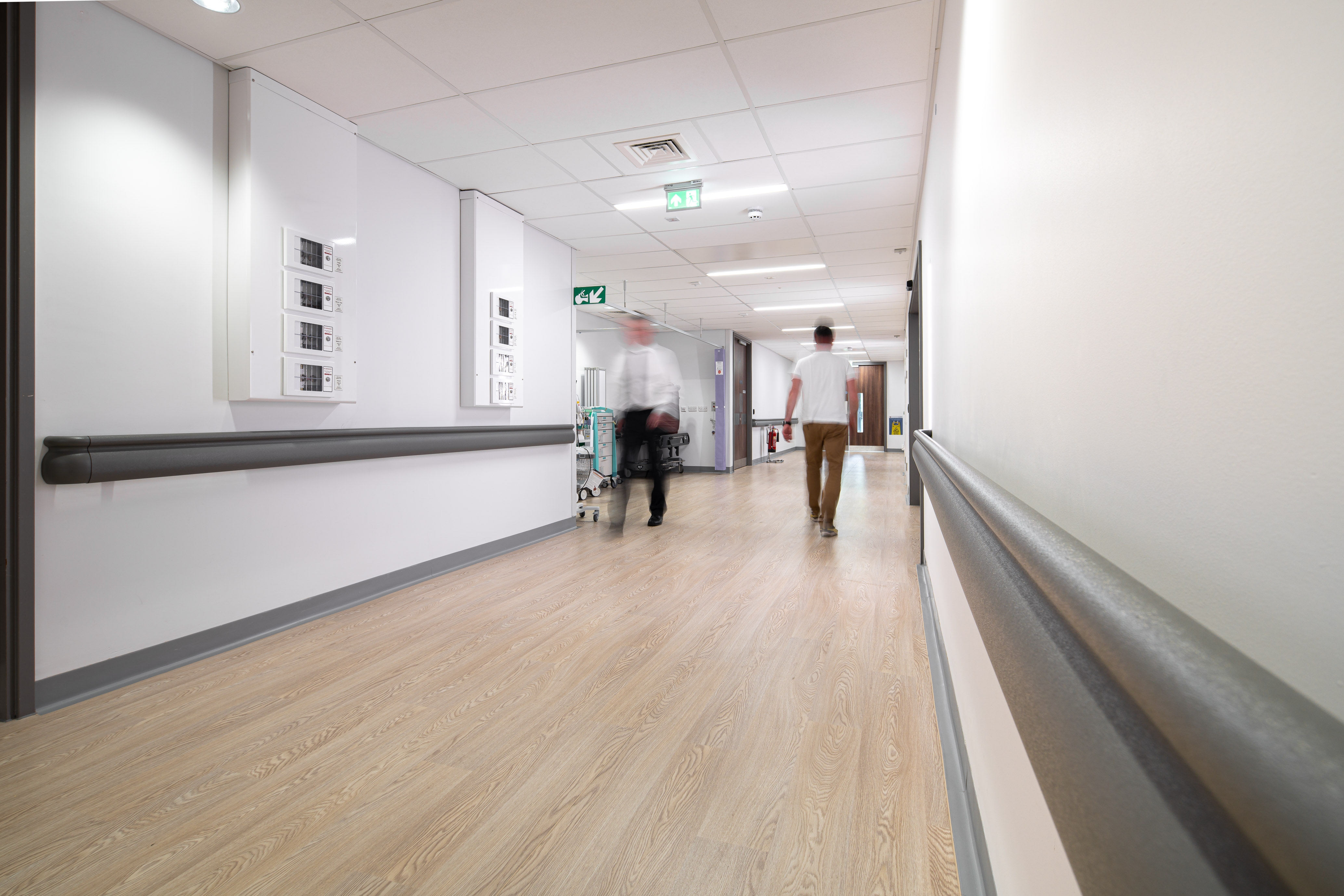Exploring how modern wall protection products are helping to improve health and care environments as well as reducing maintenance costs.

Hospitals and care homes take a battering. They are in use 24/7. With wheelchairs, trolleys, beds and vital equipment being moved between different areas, the potential for damage is greater than in many facilities. And this means there is a need to consider building protection early in the design phase.
Assessing the risks
Healthcare Building Note (HBN) 00-10 Part B: Walls and ceilings states that:
Specifications beyond protection
Infection prevention, wayfinding, and aesthetics also play a key role states Maria Morgan, product manager for wall protection at Gradus.
She explains: “Wall protection keeps down levels of everyday damage to the building interior, which reduces the need for ongoing repair and maintenance, lowering lifecycle costs, and enhancing the long-term appearance of building interiors.”
Infection control
Morgan adds: “A clean environment in hospitals and care homes, especially critical areas, is vital. Poor hygiene can result in the spread of infections and health problems for residents and patients, especially vulnerable ones.
“Wall protection products should, therefore, create an impermeable barrier to moisture and bacteria and be easy to keep clean.”
“As well as keeping people safe, it is important to keep buildings looking aesthetically pleasing, which has a big impact on how users feel.
Key areas to consider
Accessibility and Inclusivity specifications
Morgan advises ensuring products comply with the relevant regulations and building standards, including HBN 00-10 and BS 8300-2:2018 – Design of an accessible and inclusive built environment.
“It is crucial to ask who is going to use the building so that designs can then address their needs” she adds.
This includes linking the fitting of wall protection products to other key fixtures such as handrails – particularly important in care homes or hospital wards where people may be unsteady on their feet.
A fusion of functionality and aesthetics
Gradus’s SureProtect Design range was formulated specifically for areas that need a hygienic and robust solution.
“Customer feedback has led us to develop profiles that have less of a dust trap and are tighter to the wall, making them less likely to harbour dirt and bacteria,” Morgan said.
The range also allows for attractive finishes, such as wood effects, that offer a warm feel, as well as bespoke printed options, which are becoming increasingly popular in hospital and care home developments.
“Tone and colour along with green credentials are all key considerations for manufacturers.”
Case studies where location is key
Christie Hospital in Manchester
Recently, Gradus wall protection solutions were fitted at the new £125m NHS proton beam therapy centre at the Christie Hospital in Manchester.
The design team wanted a solution that would reduce maintenance and lifecycle costs, while being as ‘invisible’ as possible. This would create a less-institutional and more-relaxing environment for patients, many of whom will be young people.
As a result, full-height 90° Corner Guards were installed at key locations; walls were protected by 200mm Wall Guards; and Bed Head Protectors were installed behind beds to protect vital medical equipment. All were supplied in Alum or Chalk tones to blend into the background and complement the overall design of the facility.
In addition, in areas that will be used by potentially-vulnerable patients, Gradus installed Combination Rails – handrails that combine with wall guard elements to offer both support and protection.
Halcon Centre in Taunton
Similar solutions were fitted at Somerset Care Group’s Halcon Centre, a unit for disabled people in Taunton.
Gradus’s CGH5090 High Impact PVC-u Corner Guards and WGS200 Wall Guards, both in Gravel colour, were chosen for the building.
And the wall guards were installed at floor level as an alternative to skirting, offering additional protection against the wheelchairs that make up much of the corridor’s traffic.
Other manufacturers
Altro
Altro is another supplier which is constantly developing its wall protection range to meet the very-specific needs of the health and care sectors.
A spokesman said: “Doors and plasterboard walls can easily be damaged, be it scrapes and knocks as people pass, or more-serious dents and holes caused by wheeled traffic.
“Altro Fortis Titanium was specifically designed to protect these surfaces, being dense, impervious, and resistant to bumps and featuring a lightly-textured surface, which camouflages scuffs, keeping the wall area looking better for longer.”
Like Gradus, Altro has taken its lead from the trend among hospitals and care homes for less-institutional environments, creating products which are available in 10 different colours.
“This offers flexibility with design, making it a versatile solution across a range of areas,” said the spokesman. “Plus, the colour runs throughout the product, reducing the visibility of knocks or scrapes.”